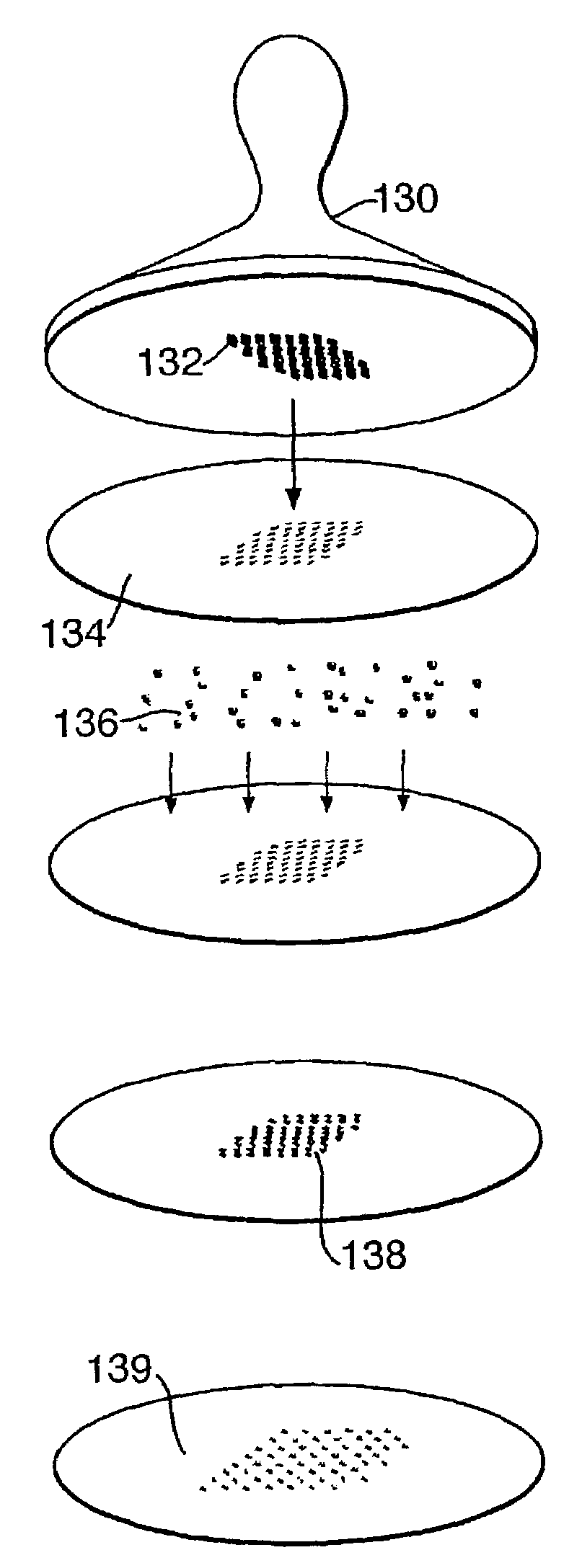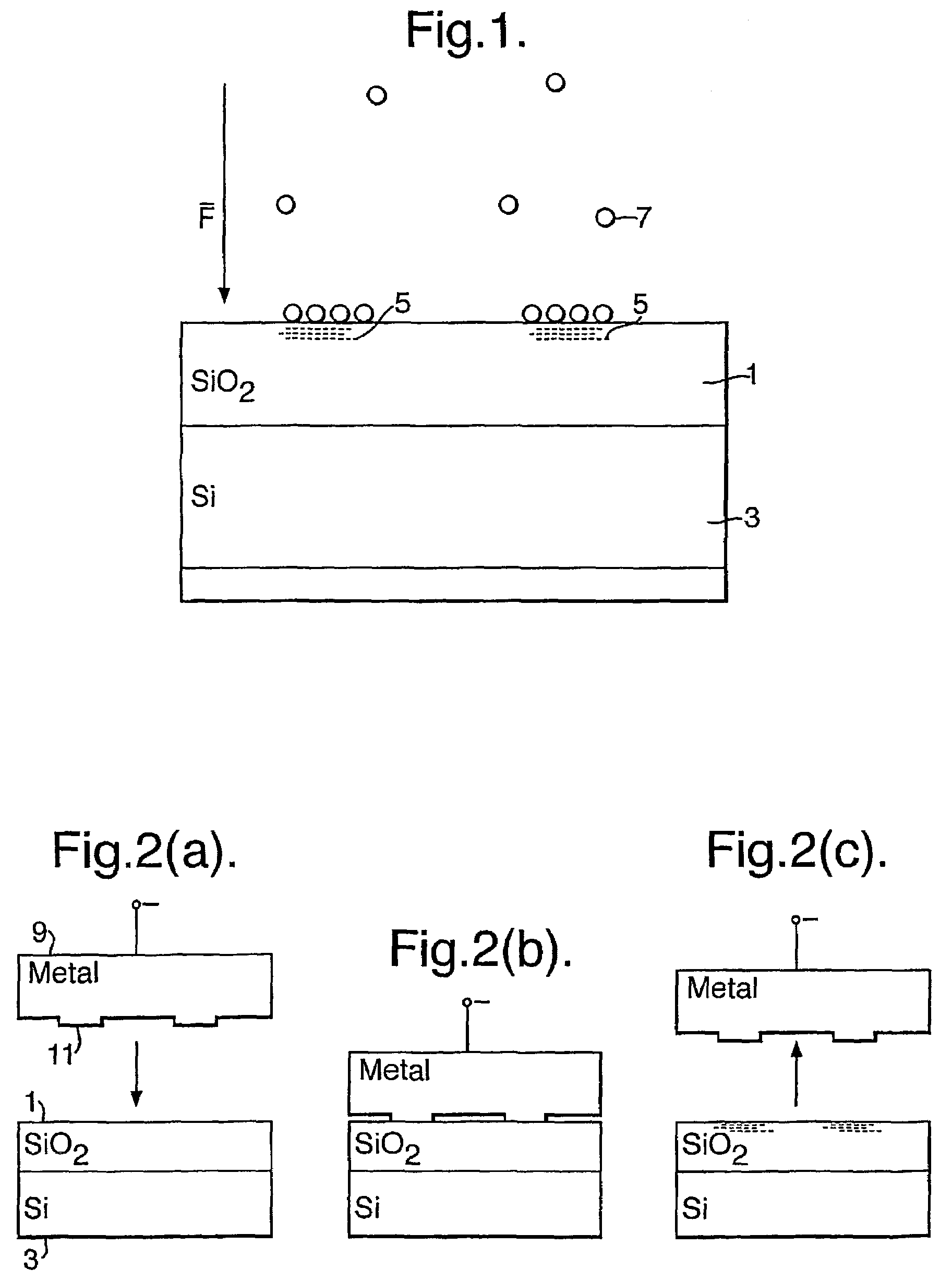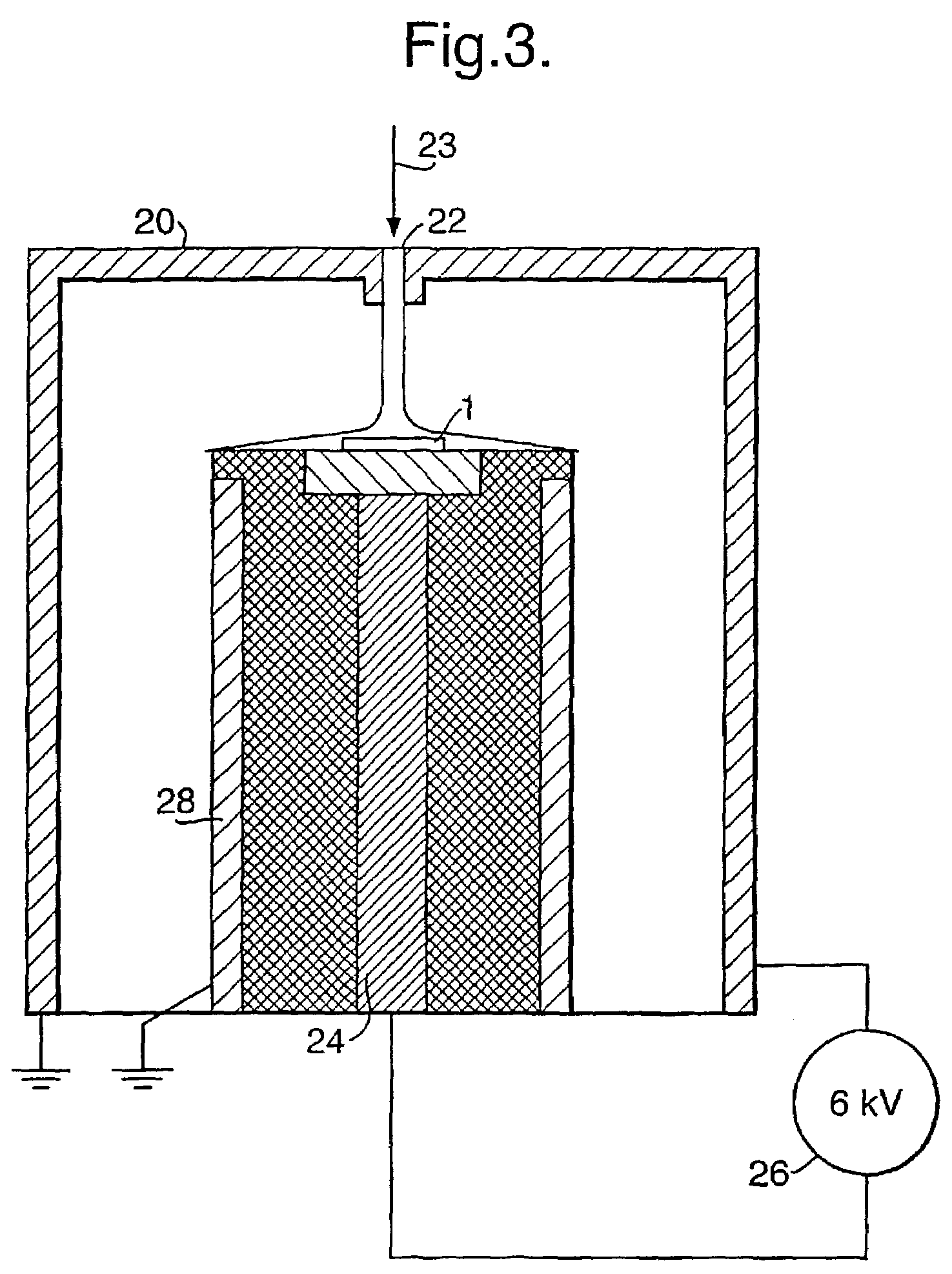Particle deposition apparatus and methods for forming nanostructures
a nanostructure and particle deposition technology, applied in the field of small-scale structure formation, can solve the problem of difficulty in forming the individual geometric features of these devices at a sufficient degree of resolution, and achieve the effect of small-scale geometric features
- Summary
- Abstract
- Description
- Claims
- Application Information
AI Technical Summary
Benefits of technology
Problems solved by technology
Method used
Image
Examples
Embodiment Construction
[0031]Referring now to the FIG. 1 of the drawings, the surface of a silicon wafer 3 is oxidised to produce a silicon dioxide layer 1, and localised regions 5 of negative charge are imprinted on the surface. Nanoparticles 7 formed in an aerosol unit are impressed with a positive charge and are attracted to the locally charged regions 5 of the silica surface layer, with the assistance of a local electric field F.
[0032]One method of applying the local charge to the surface is illustrated in FIG. 2a to 2c. A nanoprinting stamp 9 is made from a conducting material (or from an insulator coated with a metal), and is brought into contact with the insulating surface 1. The stamp 9 has protrusions 11 formed on its contact surface in a predetermined configuration. The width of these protrusions may range from dimensions of nanometers up to the macroscopic millimeter range, preferably fabricated by electron beam lithography. The height of the protrusions is not material to the region definition...
PUM
| Property | Measurement | Unit |
|---|---|---|
| size | aaaaa | aaaaa |
| diameter | aaaaa | aaaaa |
| diameter | aaaaa | aaaaa |
Abstract
Description
Claims
Application Information
 Login to View More
Login to View More - R&D
- Intellectual Property
- Life Sciences
- Materials
- Tech Scout
- Unparalleled Data Quality
- Higher Quality Content
- 60% Fewer Hallucinations
Browse by: Latest US Patents, China's latest patents, Technical Efficacy Thesaurus, Application Domain, Technology Topic, Popular Technical Reports.
© 2025 PatSnap. All rights reserved.Legal|Privacy policy|Modern Slavery Act Transparency Statement|Sitemap|About US| Contact US: help@patsnap.com



